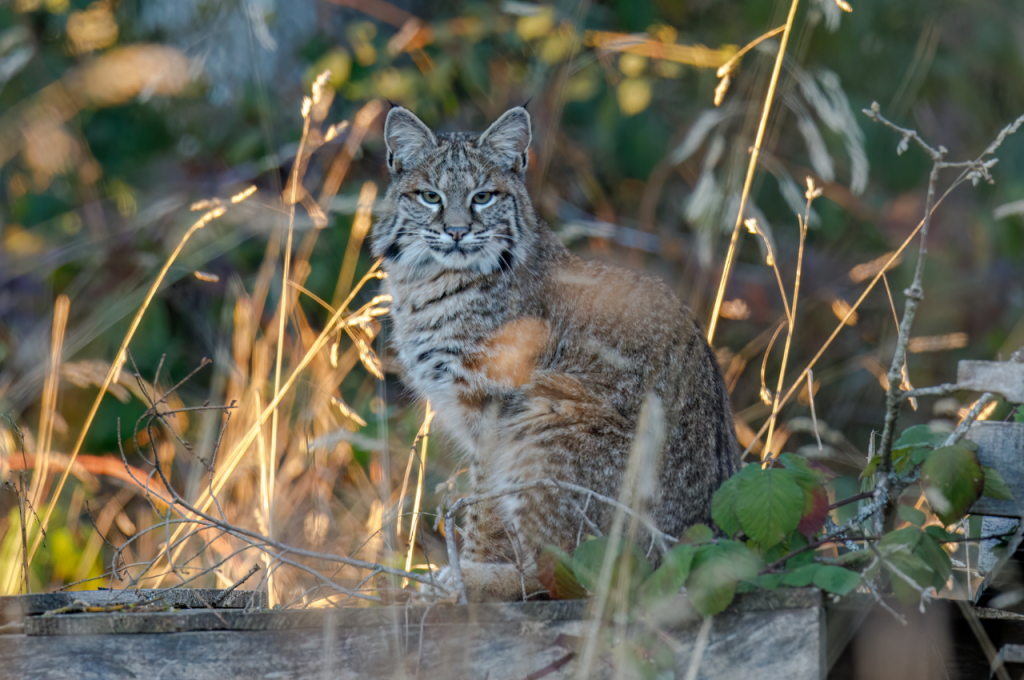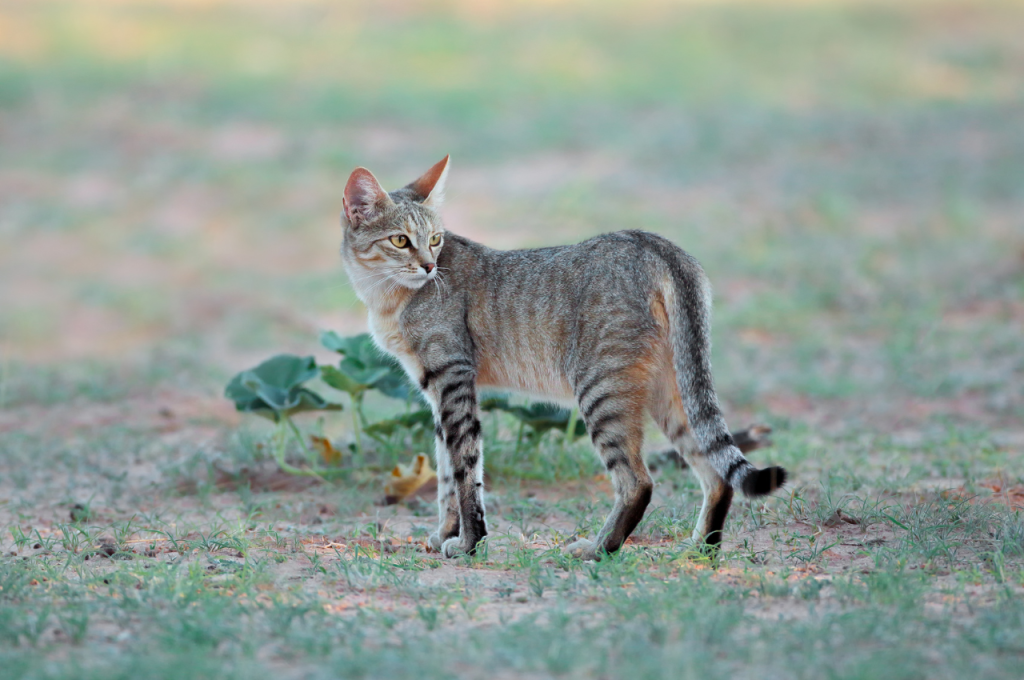No, wild cats cannot be domesticated. Domestication of wild cats is not possible due to their inherent wild instincts and behaviors.
However, some wild cat species, such as the African Serval or the Bengal cat, can be bred with domestic cats to create hybrid breeds that exhibit some domesticated traits while still retaining some of their wild characteristics. Domestication of animals has been a common practice for centuries, leading to the development of various domesticated species. However, when it comes to wild cats, the story is different. Wild cats, including species like lions, tigers, cheetahs, and leopards, cannot be domesticated due to their innate wild instincts and behaviors.
These animals have evolved over thousands of years to survive in the wild, making it nearly impossible to fully domesticate them. Nevertheless, there are instances where certain wild cat species, such as the African Serval or the Bengal cat, have been bred with domestic cats to create hybrid breeds that exhibit some domesticated traits while still retaining some of their wild characteristics.
The Allure of Wild Cats
Wild cats have long captivated the human imagination with their enigmatic nature and untamed allure. The idea of domesticating these majestic creatures has sparked both fascination and controversy. Let’s explore the allure of wild cats and debunk the myths surrounding their domestication.

Fascination with Feral Felines
Feral cats have a mysterious charm that draws people to the idea of taming and keeping them as pets. Their sleek and agile physiques, coupled with their independent and elusive behavior, evoke a sense of intrigue and admiration. The allure of feral felines lies in their enigmatic aura and the challenge of bridging the gap between wildness and domesticity.
Myths vs. Reality
- Myth: Wild cats can be easily domesticated and behave like traditional house cats.
- Reality: Domesticating wild cats is a complex and potentially risky endeavor. Their natural instincts and behavioral patterns make it challenging to fully integrate them into a domestic setting. While some individuals have successfully formed bonds with wild cats, it is important to acknowledge the inherent wildness that remains ingrained in their nature.
- Myth: All wild cat species can be domesticated with the right approach.
- Reality: Not all wild cat species are suitable for domestication. Each species has unique traits and requirements that may not align with the lifestyle and environment of a typical household.
- Myth: Wild cats make ideal pets due to their exotic appeal.
- Reality: The exotic allure of wild cats should not overshadow the ethical considerations and practical challenges associated with their domestication. Responsible pet ownership entails understanding the specific needs and behaviors of the animal in question.
Wild Cat Species: a Spectrum
From Tigers to Ocelots
Wild cats encompass a diverse range of species, from the majestic tigers to the elusive ocelots. Each species has its own unique characteristics and behaviors, making them a fascinating subject of study. While some wild cat species, such as the African serval, have been successfully domesticated, others, like the snow leopard, remain untamed.
Behavioral Traits and Habitat
Wild cats exhibit a wide range of behavioral traits shaped by their natural habitats. From the solitary nature of the elusive clouded leopard to the social dynamics of the lion pride, each species has adapted to thrive in its specific environment. Whether dwelling in the dense jungles of South America or the vast savannas of Africa, wild cats have evolved unique hunting strategies and survival instincts.
Domestication Defined
Domestication is the process by which wild animals adapt to living alongside humans, resulting in genetic and behavioral changes that make them suitable as pets or working animals.
Genetic and Behavioral Shifts
Genetic shifts occur when wild animals are selectively bred for specific traits, leading to changes in their DNA over time. Behavioral shifts involve adaptations that make the animals more tolerant of human interaction and better suited to living in captivity.
Historical Examples
Historically, there are numerous examples of wild cats being successfully domesticated. The ancient Egyptians revered the domestic cat, and over time, these animals became valued companions in households around the world.
The Science of Domestication
Domestication is the process by which animals become adapted to living with humans. Over time, domesticated animals have undergone genetic changes that have made them more docile, sociable, and better suited to living in human environments. The domestication of dogs, for example, has been well-documented and widely studied. But what about wild cats? Can they be domesticated?

Selective Breeding Practices
One way that animals become domesticated is through selective breeding practices. This involves choosing animals with desirable traits and breeding them with one another in order to produce offspring with those same traits. Over time, this can lead to significant genetic changes in a population.
However, selective breeding is not a foolproof method for domesticating wild cats. Unlike dogs, which have been selectively bred for thousands of years, wild cats have not been subjected to the same level of human intervention. As a result, their genetic makeup may not be as amenable to selective breeding practices.
Timeframe for Genetic Changes
Another factor to consider is the timeframe for genetic changes to occur. Domestication is not a quick process, and it can take many generations for significant genetic changes to take place. This means that even if selective breeding practices are successful in producing more docile and sociable wild cats, it could take decades or even centuries before these changes become permanent.
Furthermore, it’s important to remember that domestication is not just about genetics. It also involves changes in behavior and socialization. Wild cats may be genetically capable of becoming more docile and sociable, but they may still lack the behavioral and social skills necessary to live comfortably in human environments. While it’s possible that wild cats could be domesticated through selective breeding practices, it’s not a sure thing. The genetic makeup of wild cats may not be as amenable to selective breeding as that of other domesticated animals, and even if genetic changes do occur, it could take many generations for those changes to become permanent.
Furthermore, domestication involves more than just genetics and can take many years of socialization and behavior modification. As such, it’s unlikely that we’ll see domesticated wild cats anytime in the near future.
Case Studies: Exotic Pets in Homes
Discover the intriguing world of wild cats as potential exotic pets in homes. Can these majestic creatures truly be domesticated? Explore real-life case studies shedding light on the feasibility of having wild cats as part of the family.
Cautionary Tales
When it comes to wild cats being domesticated, case studies provide valuable insights into the possibilities and challenges of having exotic pets in homes.
Success Stories
Wild cats, such as servals and caracals, have been successfully domesticated by knowledgeable owners.
- Proper training and care are key.
- Positive reinforcement methods are effective.
- Establishing a strong bond is crucial.
Cautionary Tales
However, some attempts at domestication have resulted in negative outcomes.
- Improper handling can lead to aggression.
- Failure to meet specific needs can cause stress.
- Regulations and permits must be considered.
Ethical Considerations
Domestication of animals has been a practice for centuries, with dogs being the first animals to be domesticated. However, there has been much debate on whether wild cats can be domesticated. While some people have successfully kept wild cats as pets, there are ethical considerations that need to be taken into account.
Animal Welfare
The welfare of the animal is the most crucial ethical consideration when it comes to domesticating wild cats. Wild cats are not adapted to living in captivity, and they have specialized needs that may not be met in a domestic setting. Domestication can lead to psychological and physical problems for the animal, such as stress, depression, and aggression.
Additionally, the process of domestication can involve the removal of the animal from its natural habitat, which can be traumatic for the animal. It can also lead to a loss of genetic diversity within the wild cat population, making them more vulnerable to disease and other environmental threats.
Impact on Biodiversity
The impact of domesticating wild cats on biodiversity is another significant ethical consideration. Wild cats play a crucial role in maintaining the balance of the ecosystem, and their removal from the wild can have severe consequences. The domestication of wild cats can also lead to hybridization, which can result in the loss of genetic diversity within the wild cat population.
The domestication of wild cats should only be done under strict ethical guidelines. It is essential to ensure that the animal’s welfare is not compromised, and the impact on biodiversity is minimal. Domestication should not be seen as a way to exploit wild cats for human benefit.
Alternative Paths to Coexistence
Alternative paths to coexistence between wild cats and humans involve exploring the possibilities of domestication and integration. While truly wild cats, such as lions and tigers, are unlikely to be domesticated due to their size and nature, smaller wild cats like the serval or ocelot have shown potential for partial domestication.
This process involves careful, gradual exposure to human environments and handling, along with tailored care to address their specific needs. Successful integration often requires understanding and accommodating their natural instincts, behaviors, and dietary requirements. Additionally, adopting a conservation-focused approach that respects their wild nature and habitat can foster coexistence while preserving their essential characteristics.
Conservation Efforts
Efforts to preserve wild cats and their habitats are crucial to their survival. Conservation organizations work to protect these animals and their ecosystems from threats such as habitat loss, climate change, and poaching. By supporting these organizations, individuals can help to ensure the long-term survival of these magnificent creatures.
Responsible Pet Ownership
While it may be tempting to try and domesticate a wild cat, it is important to remember that these animals are not suited for life as a house pet. Instead, individuals can make a difference by adopting a domestic cat from a shelter. By doing so, they not only provide a loving home to a cat in need but also help to reduce the demand for wild cats as pets.

In addition, responsible pet ownership includes spaying and neutering domestic cats to prevent overpopulation, keeping cats indoors to prevent them from hunting wild birds and other animals, and providing them with proper nutrition and veterinary care.
Conclusion
While wild cats have traits that make domestication challenging, it is possible with proper care. Understanding their needs and behaviors is key to a successful domestication process. By respecting their wild nature and providing love, patience, and enrichment, wild cats can become beloved companions.
